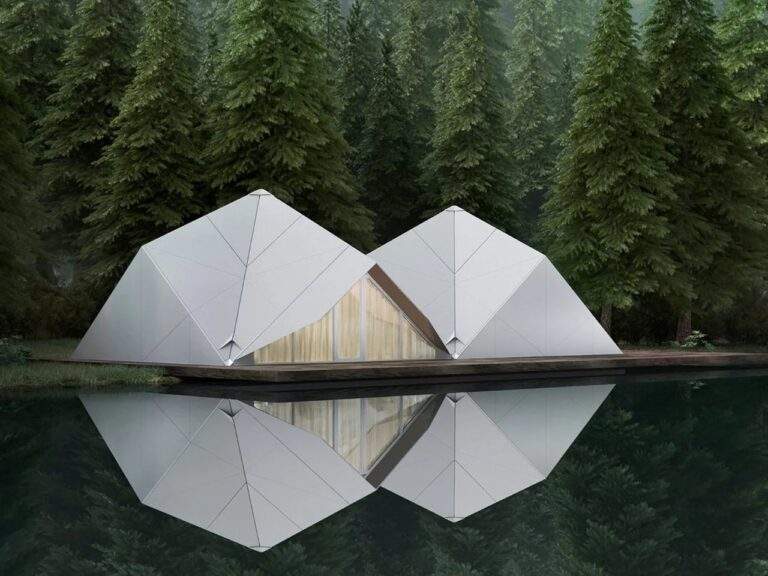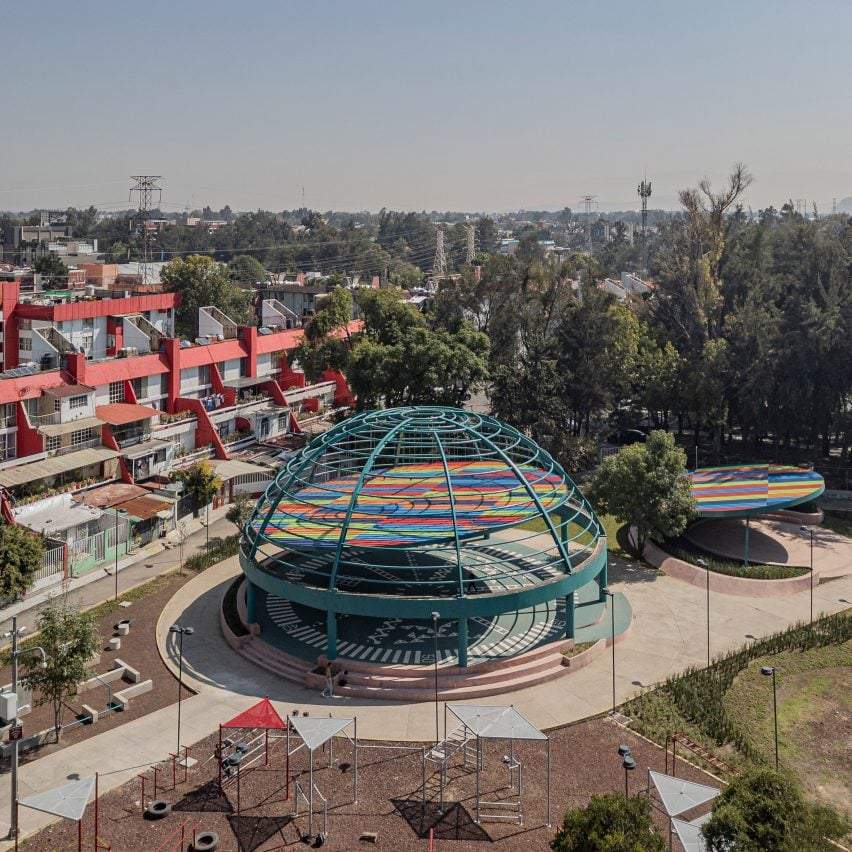This article examines Pistachio Villas, a boutique hotel in Ubud, Bali, known for its unique pistachio-shell-inspired design. It discusses the hotel’s architecture, sustainable materials, guest experience, and integration with the local environment. The article also highlights its eco-modern approach, followed by a FAQ section addressing common questions and a table summarizing key points.

Unique Architectural Design
Pistachio Villas features nine villas arranged in a circular layout, resembling a blooming pistachio flower from above. Each villa mimics the shape of an open pistachio shell, creating a soft, organic look that stands out in Ubud’s competitive hotel market. This design moves away from standard hotel structures, offering a fresh and cohesive aesthetic.
A tropical walkway connects the villas to a central pool, encouraging a sense of flow across the property. Each villa includes a private garden, giving guests their own outdoor space. The circular arrangement blends with the surrounding jungle, creating a visually harmonious layout.
| Feature | Description |
|---|---|
| Number of Villas | 9, arranged in a circular pattern |
| Villa Design | Shaped like open pistachio shells with private gardens |
| Central Amenities | Tropical walkway and shared pool connecting all villas |
| Design Inspiration | Blooming pistachio flower, focusing on organic and natural forms |

Sustainable Building Materials
The villas use bamboo, timber, and stone, selected for their environmental benefits and compatibility with the jungle setting. Bamboo, a renewable resource, forms the main structure, while timber and stone provide strength and texture. These materials align with Bali’s tradition of using natural resources and support modern sustainability goals.
The International Bamboo and Rattan Organisation states, “Bamboo can sequester up to 12 tons of carbon dioxide per hectare annually, making it a highly effective material for sustainable construction.” This choice reduces the hotel’s environmental impact while ensuring durability.
| Material | Purpose | Environmental Benefit |
|---|---|---|
| Bamboo | Main structural framework | Renewable, fast-growing, high carbon sequestration |
| Timber | Structural support and finishes | Sustainable when sourced responsibly |
| Stone | Foundations and decorative elements | Durable, locally sourced, low maintenance |
*Source: International Bamboo and Rattan Organisation (INBAR), https://www.inbar Ubud’s Environment
Located in Ubud, Bali’s cultural center, the hotel blends seamlessly with the area’s lush jungle. The curved, biomorphic design mirrors natural forms, allowing the villas to nestle into the landscape. This approach preserves Ubud’s reputation as a hub for art, culture, and nature.
The layout minimizes disruption to the local ecosystem by integrating with existing greenery. Using locally sourced materials strengthens ties to the region, supporting the local economy and reducing transport-related emissions. The design enhances Ubud’s appeal as a destination for nature and culture enthusiasts.

Commitment to Eco-Modern Principles
The hotel embraces eco-modern principles, balancing environmental care with modern design. Beyond sustainable materials, it likely includes energy-efficient systems and waste-reduction practices, though specific details are unavailable. Natural light and ventilation reduce the need for artificial cooling, a key factor in Bali’s tropical climate.
This aligns with global sustainable tourism trends. The United Nations World Tourism Organization notes, “Sustainable tourism development meets the needs of travelers while ensuring minimal negative impact on the environment and local culture.” The hotel’s approach offers a model for eco-conscious hospitality in a competitive market.
Source: United Nations World Tourism Organization (UNWTO), https://www.unwto.org

FAQ: Common Questions About Pistachio Villas
What sets Pistachio Villas apart from other Ubud hotels?
The pistachio-shell-inspired design and focus on a calm, nature-centered experience make it unique. The circular layout and sustainable materials create a cohesive retreat.
Are the villas built with eco-friendly materials?
Yes, the villas use bamboo, timber, and stone, which are sustainable and locally sourced. The design also emphasizes natural light and ventilation to save energy.
What amenities do guests have access to?
Guests enjoy private gardens, a central pool, and a tropical walkway linking the villas, all designed to promote relaxation and connection with nature.
How does the hotel reflect Ubud’s cultural and natural context?
The design integrates with Ubud’s jungle and cultural heritage through local materials and a layout that respects the natural environment, enhancing the area’s appeal.

Summary of Key Points
| Aspect | Details |
|---|---|
| Location | Ubud, Bali, Indonesia |
| Design | Nine villas shaped like pistachio shells, arranged in a circular pattern |
| Materials | Bamboo, timber, stone; chosen for sustainability and local availability |
| Guest Experience | Emphasizes calmness, natural textures, filtered light, and private gardens |
| Environmental Integration | Blends with Ubud’s jungle, uses eco-friendly materials and design practices |
| Sustainability | Focuses on renewable materials, natural ventilation, and minimal ecosystem disruption |
Pistachio Villas offers a thoughtful approach to boutique hospitality in Ubud, combining innovative design with environmental responsibility and a focus on guest serenity. Its integration with Bali’s natural and cultural landscape makes it a valuable addition to the region’s tourism offerings.







